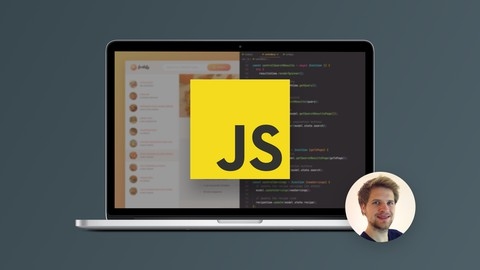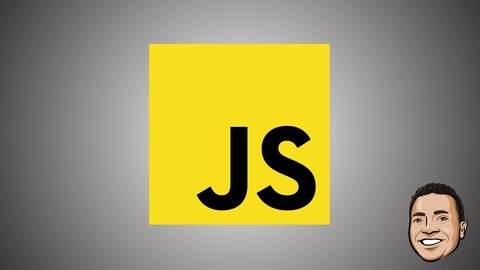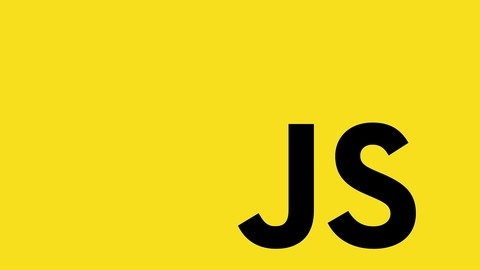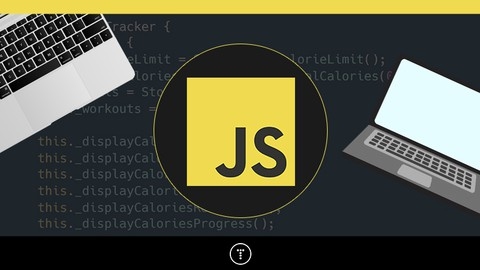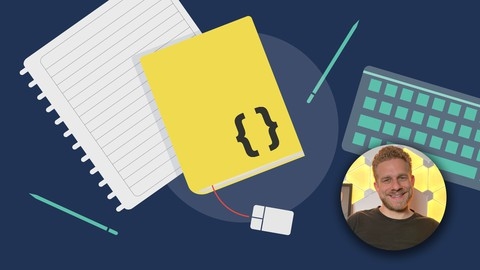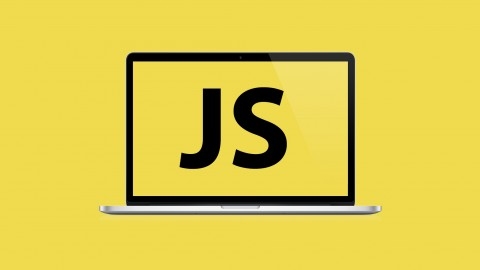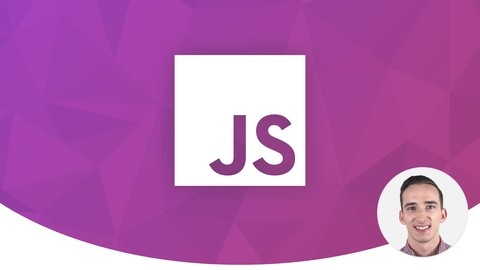JavaScript is a versatile programming language that powers the interactive elements of websites and web applications.
It’s an essential skill for aspiring web developers, allowing you to create dynamic user interfaces, handle data, and build engaging experiences.
Learning JavaScript can open doors to exciting career opportunities in web development, front-end engineering, and even back-end development.
Finding a high-quality JavaScript course on Udemy can be a challenge, with so many options available.
You’re likely looking for a program that goes beyond the basics, offering comprehensive coverage of modern JavaScript features, hands-on projects, and practical applications.
You want a course that truly equips you to build real-world applications and confidently tackle complex JavaScript challenges.
For the best JavaScript course overall on Udemy, we recommend “The Complete JavaScript Course 2024: From Zero to Expert!”.
This comprehensive program takes you from beginner to expert, covering a wide range of topics, including fundamentals, advanced concepts, web development, and modern tools.
The course features interactive lessons, engaging projects, and a supportive community, ensuring a rewarding learning experience.
This is just one of many excellent JavaScript courses available on Udemy.
Keep reading to discover our recommendations for different learning styles and goals, including courses focused on specific JavaScript frameworks, advanced concepts, and building specific types of applications.
The Complete JavaScript Course 2024: From Zero to Expert!
The course starts by covering the fundamentals of JavaScript, including variables, data types, operators, control flow, functions, arrays, and objects.
This lays a solid foundation for understanding the language.
You’ll then dive into more advanced topics like the inner workings of JavaScript, data structures, modern operators, working with strings, a closer look at functions, and array methods.
These sections will deepen your understanding and equip you with powerful tools for writing efficient code.
The course also covers important web development concepts like DOM manipulation, events, asynchronous JavaScript with promises and async/await, and making AJAX calls to APIs.
You’ll build several projects along the way, including games, a modal window, a banking app, and a geolocation-based app using external libraries.
Additionally, you’ll learn object-oriented programming (OOP) principles in JavaScript, modern tooling like modules, Babel, and Parcel, and the MVC architecture.
The course culminates with building a recipe application that covers various advanced features.
Throughout the course, you’ll gain hands-on experience with developer tools like VS Code, Git, and deployment platforms like Netlify.
The instructor emphasizes problem-solving skills, debugging techniques, and best practices for writing clean, maintainable code.
JavaScript: Understanding the Weird Parts
The course starts by setting up the development environment, introducing you to Visual Studio Code and the importance of watching the course in high definition.
You’ll then dive into execution contexts, lexical environments, and the global object, which are crucial for understanding how JavaScript works under the hood.
As you progress, you’ll explore types, operators, and the intricacies of coercion and comparison operators.
The course also delves into objects, functions, and the infamous ’this’ keyword, providing you with a solid grasp of these core concepts.
One of the standout features of this course is its focus on closures and prototypal inheritance, which are often considered the “weird parts” of JavaScript.
You’ll learn how to build objects using various techniques, including function constructors, Object.create, and the new ES6 class syntax.
It examines popular frameworks and libraries like jQuery, allowing you to learn from well-written code.
You’ll even build your own framework/library, reinforcing your understanding of JavaScript’s inner workings.
Additionally, the course covers TypeScript, ES6, and transpiled languages, preparing you for the future of JavaScript development.
The instructor also provides an in-depth look at ES6 features, including promises, async, and await.
Throughout the course, you’ll encounter “Conceptual Aside” and “Framework Aside” sections, which offer valuable insights and practical applications of the concepts you’re learning.
The instructor also highlights potential pitfalls and dangerous practices, helping you avoid common mistakes.
JavaScript Basics for Beginners
You’ll start by understanding what JavaScript is and how to set up your development environment.
The course covers using JavaScript in both web browsers and Node.js, ensuring you grasp the versatility of this language.
The syllabus dives deep into the basics, covering variables, constants, data types, objects, arrays, and functions.
You’ll learn about operators, including arithmetic, assignment, comparison, and logical operators, as well as operator precedence.
Control flow is a crucial concept, and the course dedicates a chapter to it, covering if-else statements, switch cases, loops (for, while, do-while), and various exercises to reinforce your understanding.
Objects are a fundamental part of JavaScript, and you’ll learn about object basics, factory functions, constructor functions, and the dynamic nature of objects.
You’ll also explore built-in objects like Math, String, and Date.
Arrays are covered extensively, with lectures on adding, finding, removing, and manipulating elements, as well as array methods like map, filter, and reduce.
Numerous exercises are provided to solidify your array skills.
The course delves into functions, covering function declarations, expressions, hoisting, arguments, the rest operator, default parameters, getters, setters, try-catch, scope, and the this keyword.
Throughout the course, you’ll encounter exercises that reinforce the concepts you’ve learned, ensuring you gain practical experience.
The syllabus is designed to be beginner-friendly, with clear explanations and a focus on hands-on learning.
Modern JavaScript From The Beginning 2.0 (2024)
This comprehensive course starts by introducing you to JavaScript and setting up the development environment.
You’ll learn about variables, data types, operators, strings, numbers, dates, and more.
Next, you’ll dive into arrays and objects, which are fundamental data structures in JavaScript.
The course covers array methods, object literals, destructuring, and JSON.
Functions are explored in-depth, including scope, execution context, arrow functions, and immediately invoked function expressions.
The course then guides you through control flow with if statements, switches, truthy/falsy values, and logical operators.
You’ll master loops and iteration, including for, while, and for…of loops, as well as array methods like forEach, filter, map, and reduce.
The Document Object Model (DOM) is a crucial topic, covering element selection, traversal, creation, manipulation, and events.
You’ll build a shopping list project, applying your DOM and local storage skills.
Asynchronous JavaScript is demystified through callbacks, promises, async/await, and the Fetch API.
You’ll create a movie app that consumes a real API, featuring routing, search, and pagination.
The course explores various web APIs like geolocation, canvas, web audio, video, and animations.
It also covers object-oriented programming (OOP) with constructors, prototypes, classes, inheritance, and private properties.
You’ll build a calorie tracking app using OOP principles.
Modules, tooling, Webpack, and Babel are introduced to help you build modern JavaScript applications.
You’ll learn about data structures like sets, maps, stacks, queues, and linked lists, as well as unit testing with Jest and algorithms.
The course concludes with Node.js modules and a full-stack project called “RandomIdeas” that includes a backend REST API with Express and MongoDB, and a frontend built with Webpack.
JavaScript - The Complete Guide 2024 (Beginner + Advanced)
The course starts by introducing you to JavaScript and explaining what it is and why it’s important.
You’ll learn how JavaScript is executed, the difference between synchronous and asynchronous code, and how it fits into the web development ecosystem.
From there, the course dives into the fundamentals of JavaScript, including variables, data types, operators, and functions.
You’ll learn how to work with strings, numbers, arrays, and objects, as well as how to create and manipulate them using various methods and techniques.
Once you have a solid understanding of the basics, the course moves on to more advanced topics, such as object-oriented programming (OOP), classes, and prototypes.
You’ll learn how to create and use classes, inherit properties and methods, and work with constructor functions and prototypes.
The course also covers important concepts like asynchronous JavaScript, promises, and callbacks, which are essential for working with APIs and handling asynchronous operations.
You’ll learn how to make HTTP requests, work with libraries like Axios, and handle errors and edge cases.
In addition to the core JavaScript concepts, the course covers a wide range of topics that are essential for modern web development, including:
- Working with the DOM (Document Object Model)
- Event handling
- Advanced function concepts like closures and recursion
- Regular expressions
- Modular JavaScript and modules
- JavaScript tooling and workflows (npm, Webpack, ESLint)
- Browser storage (localStorage, cookies, IndexedDB)
- Browser support and polyfills
- Performance optimization
- Testing (unit, integration, and end-to-end)
- Programming paradigms (procedural, object-oriented, functional)
- Data structures and algorithms
- TypeScript
- Web components
Throughout the course, you’ll work on practical projects and exercises to reinforce your understanding of the concepts.
The instructor provides clear explanations, examples, and best practices to help you write clean, efficient, and maintainable JavaScript code.
One of the standout features of this course is the instructor’s focus on helping you get the most out of the learning experience.
They provide tips on how to effectively use the course resources, set up a proper development environment, and leverage tools like Git for version control.
JavaScript Algorithms and Data Structures Masterclass
The course starts with an introduction to Big O Notation, which is crucial for understanding the time and space complexity of algorithms.
You’ll learn how to analyze the performance of different data structures and algorithms, enabling you to write more efficient code.
Next, the course dives into problem-solving patterns, teaching you strategies like the Frequency Counter, Multiple Pointers, and Sliding Window patterns.
These patterns are essential for solving coding challenges during interviews and in real-world scenarios.
Recursion is a fundamental concept in computer science, and this course dedicates an entire section to it.
You’ll learn how recursion works, its advantages, and how to write recursive functions.
The course also includes challenging recursion problems to solidify your understanding.
The course covers various searching and sorting algorithms, including Linear Search, Binary Search, Bubble Sort, Selection Sort, Insertion Sort, Merge Sort, Quick Sort, and Radix Sort.
Understanding these algorithms is crucial for optimizing your code and solving complex problems efficiently.
Data structures are the backbone of any programming language, and this course covers several essential data structures, such as Singly and Doubly Linked Lists, Stacks, Queues, Binary Search Trees, Binary Heaps, Hash Tables, and Graphs.
You’ll learn how to implement these data structures from scratch and understand their use cases and time complexities.
The course also covers advanced topics like Graph Traversal, Dijkstra’s Algorithm, and Dynamic Programming.
These concepts are essential for solving complex problems and understanding how to optimize algorithms.
Throughout the course, you’ll have the opportunity to practice your skills with numerous coding exercises and challenges.
The instructor provides detailed solutions and explanations, ensuring you understand the concepts thoroughly.
Javascript for Beginners Learn by Doing Practical Exercises
This course takes a hands-on approach, guiding you through the fundamentals of JavaScript with practical exercises and a custom app called “Practical App.”
The syllabus starts with an introduction to JavaScript, setting up your coding environment, and understanding the basic syntax.
You’ll learn about variables, arrays, and how to use a code editor.
As you progress, you’ll dive into control structures like if statements and loops, explore functions, and work with math operations.
One of the course’s strengths is its emphasis on event handlers, which are essential for building interactive web applications.
You’ll learn how to control clicks on buttons and handle other events, giving you a solid foundation for creating dynamic user interfaces.
The course also includes bonus lectures that cover advanced topics like printing arrays, working with built-in functions, and manipulating arrays in various ways.
These additional resources can help you solidify your understanding and expand your JavaScript knowledge.
Throughout the course, you’ll have opportunities to apply what you’ve learned using the “Practical App.”
These hands-on exercises reinforce the concepts and help you gain practical experience with variables, arrays, if statements, loops, math, functions, and event handlers.
One unique aspect of this course is the inclusion of a quick syntax reference file, which can serve as a handy resource for reviewing the code you’ve written and the concepts you’ve covered.
While the course covers a wide range of JavaScript fundamentals, it’s important to note that it’s designed for beginners.
If you’re already familiar with JavaScript or have advanced programming experience, you might find the content too basic.
However, for those new to coding or looking to learn JavaScript from scratch, this course could be an excellent starting point.
ES6 Javascript: The Complete Developer’s Guide
You’ll start by learning about array helper methods like forEach, map, and filter, which make it easier to write cleaner and more concise code.
The course then dives into other powerful ES6 features like const/let for variable declarations, template strings for better string interpolation, and arrow functions for a more concise syntax.
You’ll also learn about enhanced object literals, default function arguments, and the rest/spread operator for working with function arguments.
One of the highlights is destructuring, which the instructor calls the “goldmine of ES6”.
This technique allows you to extract values from arrays and objects in a very clean way.
The course covers destructuring objects, arrays, and even mixing the two.
Classes are introduced as a new way to create objects and inherit behavior, replacing the older prototypal inheritance model.
You’ll learn when to use classes and how to extend their functionality.
The course takes a unique approach to teaching generators by telling a short story to explain their purpose and usage.
Generators allow you to pause and resume function execution, enabling interesting patterns like data streaming.
Promises are covered in-depth, including promise chaining, error handling with catch, and using promises for asynchronous code.
The new Fetch API for making Ajax requests is also explored.
Throughout the course, you’ll work on coding exercises and quizzes to reinforce the concepts.
The instructor emphasizes understanding not just the syntax, but also when and why to use each ES6 feature.
The Modern JavaScript Bootcamp
The course starts by covering the basics of JavaScript syntax, variables, data types, and control flow.
You’ll build simple programs like a temperature converter and learn about strings, numbers, booleans, and comparison operators.
The course then dives into JavaScript functions, teaching you how to create, call, and work with functions, including handling multiple arguments and setting default values.
You’ll also learn about scope, template strings, and build a grade calculator application.
Next, you’ll explore JavaScript objects, a crucial concept for storing related data.
You’ll learn how to create, modify, and use objects with functions, as well as understand object references.
An expense tracker application will help solidify your understanding.
Arrays are covered in-depth, including creating, manipulating, looping over, searching, filtering, and sorting arrays.
You’ll improve the expense tracker by incorporating arrays.
The course then shifts to using JavaScript in the browser, covering topics like setting up a web server, DOM manipulation, handling user interactions, and working with forms and input fields.
You’ll build a notes app and a to-do app, learning how to render dynamic content and filter data based on user input.
Data storage, libraries, and debugging techniques are also covered, allowing you to save data in the browser’s local storage, split your code into modules, and debug your applications effectively.
The course expands your JavaScript knowledge by introducing arrow functions, the conditional operator, truthy/falsy values, type coercion, and error handling.
You’ll also dive into advanced topics like object-oriented programming, prototypal inheritance, and the class syntax.
Asynchronous JavaScript is a major focus, covering HTTP requests, callbacks, promises, the Fetch API, and async/await.
You’ll integrate data fetching into the hangman game application.
The course also covers styling your applications with CSS, hosting your websites, and cutting-edge JavaScript features like modules, Babel, and Webpack.
You’ll learn how to set up a development environment and convert your existing applications to use these modern tools.
Finally, you’ll explore the rest parameter, spread syntax, object spread syntax, and destructuring, which are powerful features for working with arrays and objects in JavaScript.
The Modern Javascript Bootcamp Course
The Modern JavaScript Bootcamp Course is a comprehensive guide that takes you on a journey through the world of JavaScript.
It starts with the fundamentals, covering values, variables, and data modeling techniques.
You’ll learn how to control program logic using conditionals, loops, and functions, including advanced concepts like scope, closures, and higher-order functions.
The course dives deep into arrays and objects, which are at the core of JavaScript.
You’ll master array methods like map, filter, and reduce, as well as object manipulation techniques.
The curriculum also covers essential JavaScript features like destructuring, spread syntax, and template literals.
Moving on, you’ll explore DOM manipulation, allowing you to dynamically update web pages.
The course covers event handling, form submissions, and making HTTP requests using Fetch and Axios.
Asynchronous programming is a key focus, with in-depth coverage of callbacks, promises, and the async/await syntax.
Object-oriented programming is introduced through prototypes, classes, and inheritance.
You’ll also learn about drawing animations using the canvas API and SVGs, as well as application design patterns through practical examples.
It covers building command-line tools with Node.js, creating a project runner, and developing a full-fledged e-commerce application with authentication, file uploads, and a shopping cart.
Testing is a crucial aspect, and you’ll learn about test-driven development, writing assertions, and even building a testing framework from scratch.
Throughout the course, you’ll work on real-world projects, solidifying your understanding of JavaScript concepts and best practices.
The instructor’s clear explanations, practical examples, and engaging coding challenges ensure a smooth learning experience.
Also check our posts on:
